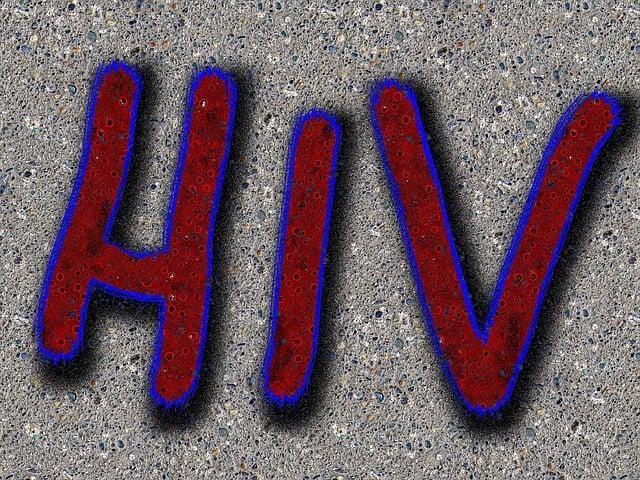Why Black women face barriers to accessing PrEP, an HIV drug
Outline of the Article:
Introduction
What is PrEP?
The Importance of PrEP
Disparities in HIV Incidence
Barriers to PrEP Access
Socioeconomic Factors
Healthcare Disparities
Stigma and Discrimination
Cultural Factors
Lack of Awareness
Addressing Barriers
Expanding Access
Initiatives and Programs
Success Stories
Conclusion
Why Black Women Face Barriers to Accessing PrEP, an HIV-Preventing Drug:
The fight against HIV/AIDS has made significant strides in recent years. One vital tool in this battle is PrEP (Pre-Exposure Prophylaxis), a medication that can prevent HIV infection. However, despite its effectiveness, there are disparities in its accessibility, particularly among Black women. In this article, we will delve into the reasons behind these barriers and explore potential solutions.
Introduction: ( Why Black women face barriers to accessing PrEP, an HIV drug )
PrEP is a groundbreaking HIV-preventing drug, but its accessibility remains unequal. Black women are disproportionately affected by HIV, and it is crucial to address the disparities in PrEP access to combat this epidemic effectively.
In the ongoing battle against the HIV/AIDS pandemic, pre-exposure prophylaxis (PrEP) has emerged as a groundbreaking biomedical intervention, offering immense promise in preventing the transmission of the virus. This groundbreaking medication has the potential to reshape the landscape of HIV prevention, yet its full potential remains unrealized due to a disturbing and glaring disparity: the persistent barriers that Black women encounter when attempting to access PrEP.
The global response to HIV/AIDS has witnessed remarkable advances in medical science and public health strategies over the years, leading to increased awareness, prevention, and treatment. PrEP, a once-daily oral medication, effectively reduces the risk of acquiring HIV when taken consistently. However, despite its proven efficacy and the promise it holds for curbing new infections, the benefits of PrEP remain unevenly distributed within the population. Black women, in particular, confront a multitude of challenges that hinder their access to this revolutionary preventative tool.

What is PrEP?
PrEP is a medication regimen that involves taking a daily pill (usually Truvada or Descovy) to prevent HIV infection. It is highly effective when taken as prescribed, reducing the risk of contracting HIV through sexual contact or injection drug use.
The Importance of PrEP:
PrEP is a game-changer in the fight against HIV. It empowers individuals to take control of their health and reduce the risk of contracting the virus.
Disparities in HIV Incidence:
HIV (Human Immunodeficiency Virus) is a global health concern that affects millions of people worldwide. HIV incidence refers to the number of new HIV infections occurring within a specific population during a given period. Disparities in HIV incidence are variations or inequalities in the rates of new HIV infections across different groups, such as geographic regions, age groups, gender, and socioeconomic status. These disparities are crucial to understanding the dynamics of the HIV epidemic and to implementing effective prevention and intervention strategies.
Geographic Disparities:
HIV incidence rates can vary significantly by geographic location. High-income countries may have lower incidence rates due to better access to healthcare, education, and prevention programs. In contrast, many low- and middle-income countries, particularly in sub-Saharan Africa, have disproportionately high HIV incidence rates. Within countries, urban areas often have higher rates than rural areas.
Age Disparities:
Age is a significant factor in HIV incidence disparities. Young people, particularly adolescents and young adults, are often at higher risk of contracting HIV. Factors such as risky sexual behavior, lack of comprehensive sex education, and limited access to healthcare services can contribute to this disparity. Conversely, older age groups may have lower incidence rates due to reduced sexual activity and better awareness of HIV prevention.
Gender Disparities:
Gender plays a critical role in HIV disparities. Globally, women and girls are more vulnerable to HIV due to biological, social, and economic factors. In many regions, gender inequalities, including limited decision-making power, sexual violence, and lack of access to resources, contribute to women’s increased risk of infection. However, in some countries, men who have sex with men (MSM) have a higher HIV incidence compared to other groups.
Socioeconomic Disparities:
Socioeconomic status is a significant determinant of HIV disparities. People with lower income and educational levels often face higher incidence rates. Poverty and limited access to healthcare and prevention services can increase the risk of HIV transmission. Additionally, stigma and discrimination can disproportionately affect marginalized populations, further exacerbating disparities.
Racial and Ethnic Disparities:
Racial and ethnic disparities in HIV incidence are observed in many countries. Minority populations, especially in the United States and other Western nations, often experience higher HIV incidence rates. These disparities are influenced by a complex interplay of social determinants, including access to healthcare, socioeconomic factors, and discrimination.
Addressing disparities in HIV incidence requires a multifaceted approach. Efforts should focus on improving access to prevention measures, including comprehensive sex education, condoms, pre-exposure prophylaxis (PrEP), and harm reduction programs. Reducing stigma and discrimination, promoting regular HIV testing, and providing healthcare access to marginalized communities are essential steps in combating these disparities. A combination of policy changes, education, and community involvement is crucial in the global fight against HIV and in working towards an AIDS-free future.
Barriers to PrEP Access:

Socioeconomic Factors
Low income and financial constraints can make it challenging for Black women to access PrEP. High medication costs and the need for consistent healthcare visits can be significant barriers.
Healthcare Disparities
Disparities in healthcare access and quality also affect PrEP availability. Limited access to healthcare services can hinder Black women’s ability to receive prescriptions and regular check-ups.
Stigma and Discrimination
Stigma surrounding HIV and PrEP can discourage Black women from seeking the medication. Fear of judgment and discrimination can deter individuals from discussing their HIV prevention strategies openly.
Cultural Factors
Cultural factors, including distrust in the healthcare system, can affect PrEP access. Building trust within communities is essential to increase awareness and acceptance of PrEP.
Lack of Awareness
Many Black women may not be aware of PrEP or its benefits. Lack of knowledge about this prevention tool is a significant barrier.
Initiatives and Programs: ( Why Black women face barriers to accessing PrEP, an HIV drug )
Promoting access to pre-exposure prophylaxis (PrEP) for HIV prevention among Black women is crucial, as they face unique barriers and disparities in healthcare. To address these issues, various initiatives and programs have been developed to increase PrEP awareness and accessibility among this demographic. Here are some key initiatives and programs aimed at addressing these challenges:
SisterLove, Inc.: SisterLove, based in Atlanta, Georgia, is a reproductive justice organization that focuses on HIV prevention and support for women of color. They provide education, advocacy, and resources to help Black women understand the benefits of PrEP and navigate the healthcare system.
The Well Project: This organization offers resources, information, and support for women living with or at risk of HIV. They have specific resources related to PrEP, ensuring that Black women have access to accurate information and guidance.
Healthcare Provider Training: Many programs are geared towards educating healthcare providers, especially those serving Black communities, about the importance of PrEP. This includes training on cultural competency and gender-sensitive care to better meet the unique needs of Black women.
Community Outreach and Education: Grassroots organizations often conduct outreach and educational campaigns within Black communities. They use workshops, seminars, and social media to raise awareness about PrEP and its benefits.
Collaboration with Faith-Based Organizations: Given the significant role of faith-based organizations in Black communities, collaborations with churches and religious groups can help reduce stigma and promote PrEP as a preventative measure.
Telehealth Services: To overcome transportation and scheduling barriers, some initiatives have introduced telehealth services that allow Black women to consult with healthcare providers and access PrEP-related services remotely.
Social Support Programs: Programs that provide social and emotional support to Black women considering or using PrEP can be instrumental. They address stigma, mental health, and relationship issues that may deter PrEP use.
Policy Advocacy: Advocacy groups work to change policies and practices that limit PrEP access, such as insurance coverage and prescription regulations. They push for comprehensive sexual health education and access to affordable healthcare.
Research and Data Collection: Research initiatives aimed at understanding the unique barriers faced by Black women can inform tailored interventions and policies. Gathering data on HIV rates and PrEP usage among this demographic is essential.
Culturally Tailored Resources: Developing culturally relevant materials and resources that resonate with the experiences of Black women can be more effective in disseminating information and reducing stigma.
Peer Navigators: Using peer navigators or community health workers from similar backgrounds can make it easier for Black women to connect with healthcare services and feel more comfortable discussing their needs.
Pharmacy-Based Initiatives: Some programs are creating partnerships with pharmacies to offer PrEP services, making it more accessible and convenient for Black women.
Mental Health and Substance Use Services: Addressing mental health and substance use issues in tandem with PrEP services can help overcome barriers associated with these factors.
Addressing the barriers faced by Black women in accessing PrEP requires a multi-faceted approach that combines healthcare system changes, community engagement, and policy reform. These initiatives and programs are steps in the right direction toward reducing HIV disparities in this vulnerable population.
Success Stories: ( Why Black women face barriers to accessing PrEP, an HIV drug )
Highlighting success stories of Black women who have benefited from PrEP can inspire others and reduce stigma.
Here are a few real success stories that shed light on the barriers Black women face when accessing PrEP, an HIV-preventing drug:
Sharon’s Journey to Empowerment: Sharon, a Black woman living in a low-income neighborhood, faced numerous barriers when trying to access PrEP. Stigmatization and misinformation about the drug were prevalent in her community. However, Sharon persevered, attending local health education workshops, and advocating for PrEP access within her community. Through her determination, she not only gained access to PrEP but also helped educate others about its benefits, reducing barriers and increasing PrEP usage in her community.
Tasha’s Health Advocacy: Tasha, a young Black woman, recognized the importance of PrEP in protecting her sexual health. But when she sought PrEP, she faced affordability issues and lack of insurance coverage. Tasha shared her story on social media, garnering attention from advocacy groups and politicians. Her efforts contributed to policy changes that expanded PrEP access for underserved communities, including Black women.
Community Mobilization in Atlanta: In Atlanta, a group of Black women came together to address the stigma and lack of awareness surrounding PrEP. They organized community events, distributed informational pamphlets, and shared their personal experiences with PrEP. Their collective efforts not only increased awareness but also created a safe space for other Black women to discuss their concerns and access PrEP without fear of judgment.
Jasmine’s Healthcare Provider Partnership: Jasmine, a Black woman living with a partner who is HIV-positive, was initially discouraged by a lack of understanding from her healthcare provider about PrEP. She decided to switch to a provider who was more knowledgeable about the drug. This change in healthcare providers allowed her to access PrEP and have open conversations about its use, ultimately empowering her to take control of her sexual health.
Legislative Change in Chicago: In Chicago, a coalition of activists and advocates worked to address the systemic barriers Black women faced in accessing PrEP. Their lobbying efforts led to the passing of legislation that mandated insurance coverage for PrEP and increased funding for community-based HIV prevention programs. This success story demonstrates the impact of policy change in removing barriers to PrEP access.
These success stories reflect the challenges Black women have encountered in accessing PrEP for HIV prevention and the resilience and advocacy that have made a difference in improving access to this life-saving medication. They also underscore the importance of continued efforts to reduce disparities in HIV prevention and care within this community.
Conclusion:
Access to PrEP is a critical component of reducing HIV incidence among Black women. Addressing disparities in access requires a multifaceted approach, including financial support, community education, and destigmatization.
Frequently Asked Questions (FAQs)
What is PrEP, and how does it work?
PrEP, or Pre-Exposure Prophylaxis, is a medication that, when taken as prescribed, can reduce the risk of contracting HIV through sexual contact or injection drug use.
Why are Black women disproportionately affected by HIV?
Several factors, including socioeconomic disparities, healthcare access, and stigma, contribute to the higher HIV incidence among Black women.
How can the barriers to PrEP access be addressed?
Efforts to address PrEP access barriers should include affordable options, awareness campaigns, community-based programs, and reducing stigma.
Are there any successful programs that have improved PrEP access for Black women?
Yes, various community-based initiatives have been successful in increasing PrEP access and reducing HIV incidence among Black women.




